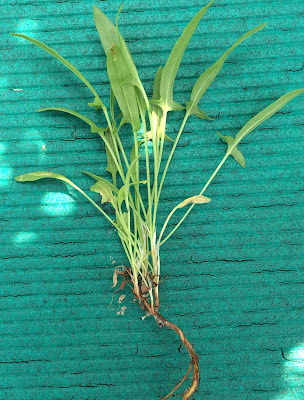Sheep Sorrel

🌿 An edible surprise under our honeyberries Sheep sorrel is an edible weed similar to garden sorrel in both description and flavor. It tastes slightly lemony and is great raw. I have not tried cooking it yet but I will probably do that soon. I have come across sheep sorrel in the past around our property but just recently found a patch of it hidden under one of our many honeyberry(haskap) bushes. The young plants look slightly different but still have a similar plant structure. Unlike wild leeks, which I talked about in this post , sheep sorrel is most likely found in your area. I suggest you try to find some and taste it for yourself. For more about our delicious honeyberries, check out my sister's post here .
